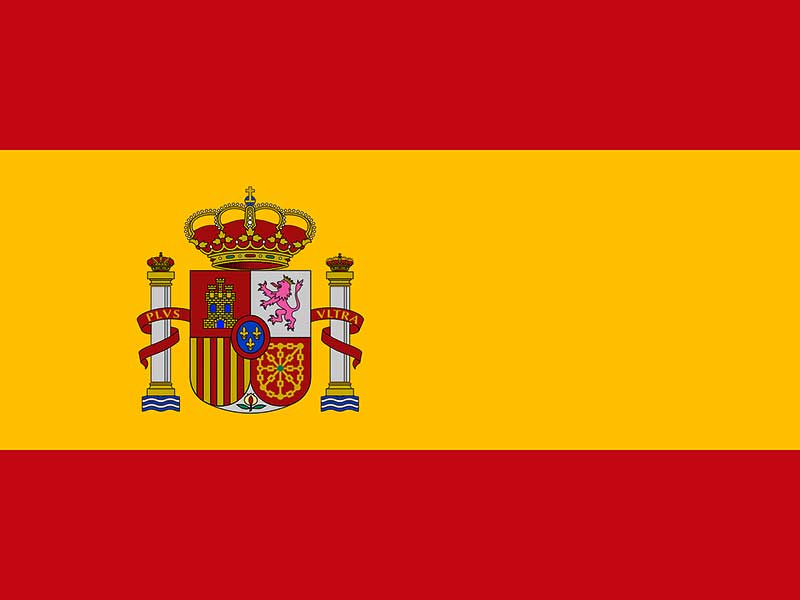Spain flag: Colors, Meaning, and History!

SPAIN FLAG
Everything you need to know about the topic!
The flag of Spain, commonly known as "La Rojigualda" or "The Red and Gold," is a symbol that represents the rich history and culture of the country.
Here is an overview of the flag of Spain:
Design and Colors
The flag of Spain features three horizontal stripes of red, yellow, and red, arranged in that order from top to bottom.
The middle yellow stripe is twice the width of each red stripe.
The proportions of the flag are defined by the Spanish Constitution of 1978, with each red stripe being half the width of the central yellow stripe.
Spain Flag Meaning and Symbolism
The colors of the Spanish flag hold historical and cultural significance.
Red and yellow have been associated with Spain for centuries, and they are believed to represent the Spanish spirit and heritage.
The red color symbolizes courage, bravery, and strength, while the yellow color represents generosity and wealth.
Historical Background of Spain Flag
The current design of the Spanish flag dates back to the 18th century during the reign of King Charles III.
The flag was based on the naval ensign of the Kingdom of Spain in 1785.
It was introduced to create a distinct and recognizable flag for Spain, differentiating it from other countries.
The coat of arms of Spain, which is set off-centered towards the hoist of the flag, represents the six kingdoms that make up Spain.
Usage and Importance
The Spanish flag is a national symbol and is used in various official and ceremonial contexts.
It is displayed on public buildings, official vehicles, and during national holidays and events.
The flag is also used by Spanish citizens to show their patriotism and pride in their country.
History behind the design of the Spanish flag
The flag of Spain, also known as "La Rojigualda" or "The Red and Gold," has a rich history that dates back to the 18th century:
During the reign of Charles III of Spain (1759-1788), three types of flags coexisted in Spain: the royal standard, the military flags, and the Spanish navy jack.
Most countries were using jacks that were predominantly white, which caused identification problems and confusion between warships at sea.
To solve this problem, Charles III chose a new design for the Spanish navy jack, which featured three horizontal stripes of red, yellow, and red, arranged in that order from top to bottom.
The new design was based on the naval ensign of the Kingdom of Spain in 1785, Pabellón de la Marina de Guerra, and was designed by Antonio Valdés y Bazán.
The flag remained marine-focused for most of the next 50 years and flew over coastal fortresses, marine barracks, and other naval property.
Under the reign of Queen Isabel II of Spain (1833-1868), use of the bi-color flag spread to the Army and the Spanish flag was thus unified.
The Royal Decree of 13 October 1843 provided for the replacement of all flags, standards, and badges, and military ensigns with other new red-weld ones.
The coat of arms of Spain, which is set off-centered towards the hoist of the flag, represents the six kingdoms that make up Spain.
The current design of the Spanish flag was established by the Spanish Constitution of 1978, which defined the proportions of the flag.
Spain flag summary
In conclusion, the flag of Spain is a powerful symbol that represents the history, culture, and spirit of the country.
With its distinctive red and yellow stripes, the flag stands as a proud emblem of Spain's rich heritage.
Whether it is displayed during official ceremonies or waved by passionate supporters, the flag of Spain serves as a unifying symbol for the nation and its people.